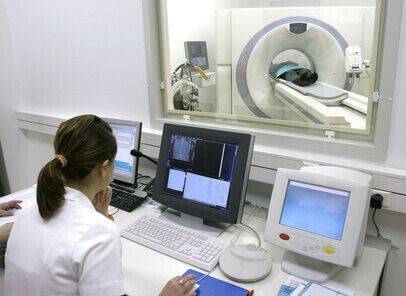For many years, percutaneous transluminal coronary angioplasty (PCTA) has expanded significantly worldwide. However, despite the demonstrated advantages of intravascular ultrasound (IVUS) in terms of minimal luminal area, reduced cardiovascular events, and restenosis, its use is not very common due to various reasons.

On the other hand, optical coherence tomography (OCT) offers even higher resolution than IVUS. While there are reports comparing it to angiography, we still lack randomized studies that compare it directly to angiography-guided percutaneous coronary intervention (AG-PCI).
The ILUMIEN IV: OPTIMAL PCI study is a large-scale prospective randomized study (1:1) that compared OCT-guided PCI (OCT-PCI) with angiography-guided PCI (AG-PCI). The study included a total of 1233 patients who underwent OCT-PCI and 1254 patients who underwent AG-PCI with the XIENCE stent.
There were two primary endpoints: the primary efficacy endpoint (PEP E), which referred to the final minimum stent area, and the primary clinical endpoint (PEP C), defined as target lesion failure (TLF) at 2 years, including cardiac death, myocardial infarction, or ischemia-driven target lesion revascularization.
Read also: TAVI-in-TAVI with Balloon-Expandable Valves.
Both patient groups were comparable in terms of characteristics. The average patient age was 65 years, and 78% of subjects were male; 72% had hypertension, 42% had diabetes, 22% had experienced an acute myocardial infarction (AMI), 13% had undergone a previous PCI, and 5% had undergone myocardial revascularization surgery (MRS). The estimated glomerular filtration rate (eGFR) was 79 mL/min, 2.2% of patients were on dialysis, and the ejection fraction was 55%.
Regarding clinical presentation, 14% of patients had silent ischemia, 28% had stable angina, 28% had unstable angina, 24% had non-ST-segment elevation myocardial infarction (NSTEMI), and 6% had recent ST-segment elevation myocardial infarction (STEMI). There were no significant differences in terms of medical treatment received.
Furthermore, there were no differences between the groups regarding predilation, the number of treated vessels, or the number of stents implanted. However, procedure time, fluoroscopy time, and contrast volume administered were slightly higher in the OCT-PCI group.
Read also: ROTA.shock Outcomes: Intravascular Lithotripsy vs. Rotational Atherectomy.
In terms of results, the PEP E favored the OCT-PCI group, with a minimum stent area of 5.72 ± 2.04 mm2 compared with 5.36 ± 1.87 mm2 in the AG-PCI group (mean difference = 0.36 mm2; 95% confidence interval [CI], 0.21 to 0.51; P <0.001). However, there were no significant differences in the PEP C (7.4% vs. 8.2%; hazard ratio, 0.90; 95% CI, 0.67 to 1.19; P = 0.45). There were also no differences in terms of cardiac death, myocardial infarction, or ischemia-driven target lesion revascularization.
Conclusion
Patients undergoing OCT-guided PCI had a significantly larger minimum stent area compared with those guided by angiography. However, there were no apparent differences in major cardiovascular events at 2 years (TLF).

Dr. Carlos Fava.
Member of the Editorial Board of SOLACI.org.
Original Title: Optical Coherence Tomography–Guided versus Angiography-Guided PCI.
Reference: Ziad A. Ali, et al. NEJM DOI: 10.1056/NEJMoa2305861.
Subscribe to our weekly newsletter
Get the latest scientific articles on interventional cardiology





